Biodynamic wines are hot in Australia right now, but why?
Perhaps it’s the demand for sustainable and eco-friendly practices in winemaking, or perhaps it’s the fantastic flavour from this unique approach to grape cultivation and wine production?
But what are biodynamic wines, and what is our expert opinion on the best biodynamic wines in Australia?
What are biodynamic wines?
The world of biodynamic wines is fascinating. More than you may realise.
Biodynamics (not only offers) effective, creative and sustainable solutions to common problems experienced by contemporary vineyards, (but also makes) better wine-growers, better wine, and even more appreciative wine drinkers, too.
Monty Waldin, Biodynamic Wines, 2004
Biodynamic wines are a type of wine produced using principles and practices derived from biodynamic farming, which is a holistic and regenerative approach to agriculture.
Biodynamic farming was actually developed in Australia, by Austrian philosopher Rudolf Steiner, way back in the 1920s long before Greta Thunberg was born (and her parents too).
The method is based on the concept of treating the vineyard as a self-sustaining ecosystem, with a strong emphasis on soil health, biodiversity, and the use of natural preparations.
Biodynamic vineyards are managed with a deep respect for the natural environment. The winemaking process is guided by the lunar calendar and (yes, you’ll laugh) cosmic rhythms. This includes planting, pruning, and harvesting according to specific lunar phases and astronomical influences.
Biodynamic farmers use a variety of biodynamic preparations, which are made from fermented plants, minerals, and animal manures, to enhance the vitality and fertility of the soil.
The use of synthetic chemicals, genetically modified organisms (GMOs), chemical fertilisers, herbicides, and pesticides are all a no-no in biodynamic winemaking, which is very beneficial for your health and wellbeing – you can think of biodynamic wines as a detox 😉
Biodynamic winemakers focus on building healthy, living soils which are teeming with diverse microorganisms, promoting biodiversity, and working in harmony with nature to create wines that are said to express a sense of place, or “terroir,” in a unique and authentic way.
The principles of biodynamic winemaking go beyond just the vineyard and extend to the winery as well, with a focus on using natural fermentation, minimal intervention, and low levels of added sulfites during the winemaking process. The goal is to create wines that are not only environmentally sustainable but also reflective of the unique character of the vineyard and the vintage.
Why are biodynamic wines so popular in Australia?
Biodynamic wines have gained popularity in recent years due to their emphasis on sustainability, biodiversity, and holistic farming practices.
Many wine lovers appreciate the unique and authentic flavours that biodynamic wines can offer, as well as the commitment to environmental stewardship and regenerative farming.
In Australia, a growing number of wineries are adopting biodynamic practices, producing exceptional wines that embody the spirit of biodynamic farming while showcasing the diverse terroirs of the Australian wine regions.
I’m sure, if you love wine as much as I do, you’ll come to enjoy both the flavours and better quality of biodynamic wines, of which Australia has plenty.
What is the history of biodynamic wine?
“To our modern way of thinking, this all sounds quite insane”
Rudolf Steiner, Agriculture, 1924
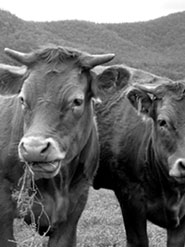
In the words of Max Allen, Australian wine journalist:
In 1924 the Austrian philosopher Rudolf Steiner gave a series of lectures outlining a new approach to agriculture to a group of farmers concerned about the dwindling fertility of their crops and declining health of their livestock.The directions Steiner gave in these lectures became the foundations of what we know today as the biodynamic system of organic farming. In some ways, he was ahead of his time: not only can Steiner’s lectures be seen as possibly the world’s first systematic attempt to develop an organic farming system in response to the encroaching power of the industrial agricultural movement, but his repeated observations throughout the lectures that ‘everything in nature is interdependent’ also predates James Lovelock’s Gaia theory by half a century.
A number of people – including Maria Thun in Germany, Alex Podolinsky in Australia and Peter Proctor in New Zealand – took Steiner’s initial ideas and developed them over the ensuing decades. Today, biodynamics is a complex toolkit of philosophies and techniques available to anybody interested in farming – or growing grapes and making wine – sustainably.Steiner was the founder and figurehead of the Anthroposophical Society, a movement dedicated to bridging the gap between the physical and spiritual worlds. He called his 1924 lectures ‘Spiritual Foundations for the Renewal of Agriculture’ (usually known simply as ‘Agriculture’) which is important to note, because the methods Steiner proposed were practical, energetic and spiritual. Practical in that they were intended to increase microbial life, structure and nutrient availability in the soil; energetic in that they were intended to synchronise the earth with the influences of the moon and planets; and spiritual in that an anthroposophical approach to agriculture would, he hoped, encourage humans to connect to the spirit world.
The three levels of wine biodynamics
Wine biodynamics can be viewed as three inextricably linked levels:
- The first, physical level is very practical. A lot of BD techniques such as composting and building up soil and vine health are easy to understand, implement and observe. Growing grapes this way – sustainably, using renewable resources, building up organic matter and carbon in the soil – is something that an increasing number of people are willing to not only accept, but also support. Even if the techniques themselves sometimes defy logic or scientific scrutiny.
- The second level of biodynamics is the cosmic one: the idea that everything is interconnected, and that the rhythm of the moon and the planets have an effect on life on Earth. This is harder for grape growers and winemakers (and wine drinkers) with a strong scientific background to accept, but it’s the level at which most biodynamic wine producers I’ve spoken to operate on. It’s the part of biodynamics that people with generations of farming or grape-growing behind them – generations of observing the natural world – find easier to adopt.
- The third level of biodynamics is the spiritual level: Steiner wasn’t using anthroposophical theory to help people farm organically; he saw the adoption of his organic farming techniques as a way of bringing anthroposphy to the world. This is the most difficult bit for many to accept, and only a handful of growers and winemakers I’ve visited acknowledge that they adopt biodynamics to this extent.
Steiner believed his agricultural method would help to heal the Earth. You can choose to take that belief, and all of the following information on any or all or none of the levels I’ve outlined above.
The Biodynamic Preparations
These preparations were all described by Steiner in his Agriculture lectures.
Preparation 500
The cornerstone of biodynamics is preparation 500. This is made by stuffing cow manure into cow horns, burying those horns over winter, then stirring a small amount of the fermented manure in rain water (Proctor recommends 25 grams of 500 in 13 litres of water for a one acre block) for an hour and spraying the resulting liquid in droplets on your vineyard soil. The details of the stirring are important: it has to be for an hour, using the reverse vortex method, where the water is stirred in one direction until a vortex forms in the bucket – and then, when the vortex reaches the bottom, the stirring direction is reversed, creating chaos in the liquid. Again, this works on many levels, depending on who you talk to: this is either a way of attracting cosmic influences into the liquid – or just a bloody good way of mixing stuff up.
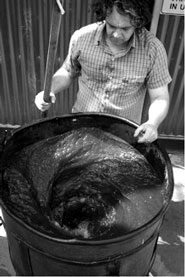
500 is used to improve soil structure and microbiological activity. Sue Carpenter of Lark Hill vineyard in the Canberra District reckons that spraying the horn manure stimulates soil bacteria, which promotes soil fungi, which in turn enable nutrient exchange between the vine roots and the soil.
Lethbridge Wines’ Maree Collis – who has a PhD in organic chemistry – also sees 500 as a microbiological inoculation, which explains why the best time to spray it is said to be in the afternoon, when the soil is warmer, and it has more of an impact. Toby Bekkers of Paxton vineyard in McLaren Vale sees spraying 500 as ‘seeding the soil’ with life, like adding yeast to a tank of grape juice.
Preparation 501
This is made by stuffing finely-ground quartz (silica) into cow horns, burying those horns over summer, then stirring a very small amount (just a couple of grams) of the powder in rain water for an hour and spraying the resulting liquid in a fine mist over your vines. The purpose of 501 is to complement the earthy forces of the 500 and attract light forces to the plant.
The use of 501 is controversial in Australia, with some BD experts and many grape-growers choosing not to use it, arguing that the last thing we need here is more sunlight on our vines. Others growers insist that 501 is necessary to balance the 500.
Kate Kirkhope of Kiltynane Estate in the Yarra Valley describes 501 as ‘an atmospheric umbrella’. Everyone agrees, though, that it is a very powerful prep – even though it is applied in such remarkably low doses.
Sam Statham of Rosnay vineyard in Canowindra, for example, applied some 501 towards the end of the ripening season in 2004 because his merlot was ripening too slowly – and sugar levels shot up way too far. ‘It’s something you definitely need to use with caution,’ Statham says.
Preparation 502-507
Tiny amounts – teaspoonfuls – of these preps are added to the compost to bring various benefits to the resulting humus when added to the soil. They can also be added to compost tea.
502 – Yarrow flowers matured in a stag’s bladder, hung up in a tree over summer; said to attract light forces and connect the soil to cosmic influences.
503 – Chamomile flowers stuffed into cow’s intestines and buried over winter; said to help the breakdown of the compost.
504 – Stinging nettle buried for a year; said to bring intelligence to the soil.
505 – Oak bark buried in a sheep skull in a damp place over winter; helps attract earth forces to the soil.
506 – Dandelion flowers buried over winter in a cow’s mesentery; said to bring life forces to the soil and the plants which grow in it.
507 – A solution of valerian flowers, sprayed over the compost heap; said to bring warmth to the compost.
Preparation 508
This is a solution of equisetum – horsetail – heavily diluted and sprayed on vines to bring a drying effect. Useful in a damp season, helpful in countering mould.
Other Biodynamic Practices
Composting
Composting’s my passion’ says Barry Morey of Sorrenberg vineyard in Beechworth, as he digs into a beautiful pile of sweet black goodness. He’s not alone: good compost – with preps 500-507 added – spread under the vines and between the rows is a crucial part of building structure and microbial activity in biodynamic soil.
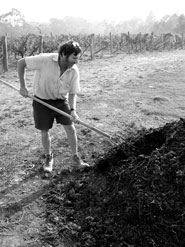
Many BD growers also make cow pat pit, or CPP – otherwise known as barrel compost or manure concentrate. This is a barrow-load of cow manure, mixed with crushed egg shells, basalt dust and the compost preps, then matured for six weeks, either in a shallow pit or in a half-buried barrel (hence the name). This is then stirred in with the 500 and sprayed onto the soil.
Following the phases of the moon and positions of the planets
Steiner wasn’t the first person to encourage awareness of the position of the moon and stars when farming. Indeed, he described such awareness as ‘peasant wisdom’ – something which had been lost in his/our materialistic age, and which his ‘new’ farming methods aimed to recapture. After the biodynamic workshop I co-hosted in the Barossa in July 2006, local winemaker Geoff Schrapel, whose family settled in the area from Silesia in the 1840s, came up to me and said: ‘You know, we’ve always followed the moon when we’re planning any work in the vineyard.’
The effect of the moon is easy to understand. As Jane Sandilands of Haywards of Locksley vineyard in the Strathbogie Ranges puts it: ‘If you can grasp the concept of the moon affecting the tides, you should be able to extend that to vines. You can see it for yourself at pruning times: you can see the differences in the sap flow depending on the phases of the moon.’
It kind of makes sense, then, that 500, for example – with all its supposed earthy influences – should be sprayed in the afternoon under a descending, waning moon.
It’s perhaps harder to grasp, though, that the moon’s relative position to distant constellations or planets might also have an affect on what happens on earth. But many biodynamic winegrowers soon do grasp this concept, and follow their Astro Calendar as closely as they can, timing their activities according to whether it’s a fruit day (moon in a fire sign such as Leo – good for picking grapes), root day (moon in an earth sign such as Taurus – good for making compost, sparying 500), leaf day (water sign, Scorpio) or flower day (air, Aquarius). Most also avoid agricultural activity (or activity of any kind) during disruptive ‘node’ times, when the moon’s path crosses the path of the sun.
Some people also extend this idea to tasting wine, believing that fruit days will best display the wine’s varietal character and quality – and that root days are to be avoided, because the wines will be least expressive. And as for tasting on a node day – well, just forget about it.
Compost teas and other concoctions
Many biodynamic grape growers and winemakers make ‘teas’ using fish, compost, nettles and other goodies to spray on their vineyards. Barry Morey of Sorrenberg and Ray Nadeson of Lethbridge, for example, both use the diluted juice of worm castings as a foliar spray when applying the preparation 501.
The Biodynamic Way of Thinking
“Biodynamics is a mindset, not a religion or a recipe”
Monty Waldin, Biodynamic Wines, 2004
This is, for me, one of the most important parts of biodynamics. I have found that almost every Australian winemaker who has adopted BD as a method of growing grapes has found their whole approach to life has changed.
‘I like the holistic approach of BD,’ says Vanya Cullen. ‘It goes right through to all aspects of what we’re doing, and fits in with the philosophy of quality and integrity established by my parents. We’re all working towards a common goal now. The ego disappears.’
Other winegrowers emphasise how BD makes you pay more attention to the details. ‘It gives you a mindset that helps you treat your vineyard as you would your first-born child,’ says Rod Windrim of Krinklewood in the Hunter Valley. ‘You try to take away the potential for disease to happen – if you know you haven’t got the option to drop back on nasty chemicals it keeps you on your game.’
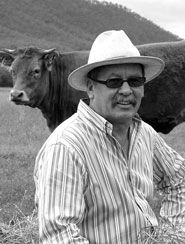
As Ron Laughton of Jasper Hill observes: ‘You don’t need an aspirin to cure a headache; you need to get rid of the stress that caused the headache in the first place. The concept of looking after your soil isn’t biodynamic, it’s just good farming.’
‘You know what I like best about biodynamics?’ asks Adam Marks of Bress vineyard. ‘It encourages you to find your own way. To find out for yourself how best to care for your land.’
Some biodynamic growers agree with Steiner that the attitude and feelings of the person working the land, making the compost or applying the preps are transmitted to the activity and the energy of the earth. As New Zealand winemaker James Millton says: ‘enthusiasm is the best fertiliser.’
Biodynamic Wines Adapted for Australian Conditions
Although he was very clear about how and why to make and apply the biodynamic preps, Steiner also says many times throughout his Agriculture lectures that his ideas were indications, that more work needed to be done, and people should not be afraid to try variations out for themselves. He even responded to a question about whether stag bladders could be substituted for something else in the yarrow preparation by saying ‘It is entirely possible that somewhere there is another suitable kind of animal – perhaps indigenous to some corner of Australia.’
This again for me is a very exciting part of biodynamics – how the ideas and methods developed in cool, wet middle Europe can be adapted to a hotter, drier Australia. And how ancient Australian knowledge of the stars and the thoroughly un-European seasons could perhaps augment biodynamic practice.
‘We want to do it in an Australian way,’ says winemaker Stephen Henschke. ‘We use casuarina (She-oak) here for one of the compost teas, for example, rather than the horsetail (equisetum) used in Europe. And I’ve heard of some people using burying manure in emu eggs instead of cow horns to make the 500.’
Other winemakers are – perhaps more radically – applying the 500 to their vineyards through the irrigation drippers, rather than by spraying it, a development that will no doubt horrify the purists.
What are the Best Biodynamic Wines in Australia?
At the time of writing there are many biodynamic wines in Australia for you to discover, and I encourage you to do so.
If you want a starting point, here are some of what I consider the best biodynamic wines in Australia:
- Gemtree Vineyards Biodynamic Shiraz – Produced by Gemtree Wines in McLaren Vale, South Australia, this wine is made from Shiraz grapes grown on biodynamically managed vineyards. It has received high praise for its rich flavors and smooth tannins.
- Cullen Wines Diana Madeline – Produced by Cullen Wines in Margaret River, Western Australia, this wine is made from a blend of Cabernet Sauvignon, Merlot, Malbec, Petit Verdot, and Cabernet Franc grapes grown using biodynamic practices. It is known for its elegance and complexity, with notes of dark fruits, herbs, and spices.
- Battle of Bosworth Puritan Shiraz – Produced by Battle of Bosworth in McLaren Vale, South Australia, this wine is made from Shiraz grapes grown using biodynamic principles. It is known for its vibrant fruit flavors, balanced acidity, and fine tannins.
- Henschke Abbotts Prayer – Produced by Henschke Wines in Eden Valley, South Australia, this wine is made from a blend of Shiraz, Cabernet Sauvignon, Merlot, and Cabernet Franc grapes grown using biodynamic practices. It is known for its intense flavors of black fruits, spices, and herbs, as well as its velvety texture.
- Spring Seed Wine Co. The Good Wine Shiraz – Produced by Spring Seed Wine Co. in McLaren Vale, South Australia, this wine is made from Shiraz grapes grown on biodynamically managed vineyards. It is known for its ripe fruit flavors, spice notes, and smooth finish.
- Craggy Range Te Kahu – Produced by Craggy Range in Hawke’s Bay, New Zealand (which also has biodynamic vineyards in Australia), this wine is made from a blend of Merlot, Cabernet Sauvignon, Cabernet Franc, and Malbec grapes grown using biodynamic practices. It is known for its complex flavors of dark fruits, spices, and earthy notes.
Frequently Asked Questions about Biodynamic Wine
What’s the difference between organics and biodynamics?
Biodynamics is a system of organic agriculture. All the principles of organics – not using synthetic fertilisers, pesticide or fungicide in the vineyard, for example, or using low levels of preservatives in the winery – also apply to biodynamics. Many organic (and, indeed, older generations of conventional) grape growers share methods with their biodynamic counterparts such as following the cycles of the moon. Where biodynamics differs from (or expands on) organics, is in the homeopathic use of ‘preparations’ such as the cow-horn manure, developed by Rudolf Steiner, to re-connect the earth and plants with cosmic life forces.
Do biodynamic wines contain preservatives?
The short answer is that you can find Australian biodynamically-produced wines with no added preservatives (Robinvale Wines, Bunn’s, Haywards of Locksley), but most biodynamic wines will have some preservatives in them. Like organic winemakers, biodynamic winemakers tend to use less of the preservative sulphur dioxide during winemaking than their conventional colleagues. But because preservative-free wines (more correctly described as ‘no added preservative’ wines as some sulphur dioxide can be produced naturally as a result of fermentation) and organic/biodynamic wines have both traditionally been aimed at health-conscious consumers, there is lingering confusion that the two are inextricably linked, which is not the case.
Can biodynamic grape growers spray their vineyards with copper and sulphur?
Yes. But again, the allowable levels are lower than those allowed for conventional viticulture. And again, in practice, most biodynamic growers keep sprays of copper and sulphur to a minimum, or don’t use them at all (especially in warm, dry seasons like 2006/2007), preferring to use whey or skim milk to prevent mildew, or compost teas to build up the vines’ resistance to mould.
Where’s the proof that spraying a tiny bit of fermented cow poo on your vineyard actually works?
There have been a number of scientific studies comparing biodynamic, organic and conventional agriculture and viticulture. One long-term US trial, for example (reported in the American Journal of Enology and Viticulture), found that while there was little difference between the soil measurements in the vineyards being observed, the biodynamic vines were in better balance and produced riper, darker-coloured red grapes.
Is it more time-consuming and expensive growing grapes biodynamically?
Time-consuming, yes, and costly, initially, if you spend up big on under-vine weeding machines and your own whiz-bang flowform for stirring the 500. But according to David Paxton, a large-scale McLaren Vale grower and winemaker who has converted all his vineyards to BD: ‘We reckon once we’re on top of it, even though it’s labour intensive, it’s going to cost us less than working along the chemical path.’ Paxton’s viticulturist, Toby Bekkers, is also positive about the labour-intensive side of BD: ‘One of the best things about it is that we’re in the vineyard all the time now – and we’re having a lot of fun,’ he says. ‘It’s reinvigorated the people who work here.’ All of which can only be good for wine quality.
Do you have to use all the biodynamic preps to be biodynamic?
Well, yes … there are very specific reasons why Steiner advocated using all the various preps, so dropping a couple from the list would seem to be defeating the purpose. But then again, biodynamics is also about developing an intimate understanding of your own particular piece of dirt – and if that means adapting the ‘recipe’ to suit, then perhaps that’s okay, too. This is certainly the attitude of sixth generation Barossa grape grower and winemaker Troy Kalleske’s: ‘We spray 500 and occasionally 501 and use a little bit of compost, but we don’t use the other preps,’ he says. ‘Hard-core practitioners would say that means we’re not really BD. But I’d say that we have a pretty good idea by now of our property and how healthy it is, and if we feel we don’t need to, then why should we?’
Why are some vineyards certified biodynamic and others not?
Ah, now, this is the curly one. Hard-core biodynamic wine people reckon you’re only legitimate if you go the whole hog and certifiy – which means you are audited by an Australian government-accredited certification body. The little certification logo on your label certainly gives the person who buys your wine confidence that the grapes were grown and the wine made according to a set of standards.
On the other side of the debate, many winemakers using BD methods argue – equally passionately – that it’s the ‘conventional’, chemically-dependent growers who should be subjected to the rigorous auditing, rather than the other way around. New Zealand BD wine pioneer James Millton, for example (who in fact is certified) asks: ‘Why should I have to tick the boxes to prove that what I’m doing is working, when all I need to do is show you the bees and worms and flowers…?’
And then there are winemakers who use some or all of the BD methods but choose not to certify because they know they wouldn’t meet the certification standards. Which becomes a bit of a grey area when these winemakers choose to use the word biodynamic on, say, the back label or their web site.
Which is another reason for setting up this web site. I intend to visit every single vineyard in the country using biodynamics, so that I can talk to the winemakers, taste the wines and literally kick the dirt. I’ve already started this odyssey, and it’s become obvious very quickly that ‘to certify or not to certify’ is not a simple issue.
Just as there are fully-certified, ridgy-didge biodynamic vineyards making crap wine, there are also biodynamically-run vineyards that wouldn’t be certified in a million years because they don’t conform to the ‘standards’, that not only hum with good vibrations, but also produce spectacular wines. To be honest, while the ideal is somewhere like Hochkirch in western Victoria – a fully-Demeter-certified vineyard that also produces increasingly brilliant wine – I’m going to rave on this site about uncertified biodynamic producers if I think the wines are good enough.
Interestingly, though, a number of Australian producers who have been resistant to certification on philosophical grounds are now considering it because of pressure to do so from their distributors, both locally and in export markets, who see the increasing importance of green credentials and accountability.
Are some winemakers getting into biodynamics because it’s the latest trend, and they think they might make money out of it?
That’s certainly something I’ve heard many BD producers accuse other BD producers of (who says the wine industry isn’t bitchy?). And I’ve also come across some who play down their BD activities because they don’t want to be accused of jumping on a bandwagon. Victorian winemaker Gilles Lapalus, for example, is typical of many in that he runs his vineyard biodynamically but doesn’t make a big noise about it, and certainly isn’t seeking certification: ‘The day we start to use biodynamics as a commercial marketing tool, the word loses its meaning,’ he says.
Not surprisingly then, the hardcore BD people view statements like this, from Paxton viticulturist Toby Bekkers, with disdain: ‘We’re doing it because we think it can help us grow better fruit. And we’re doing that because, to be honest, we’re chasing the extra point – whether that’s the extra point on the grading scale of the wineries we sell grapes to, or an extra point from the judges or the critics.’
But I would argue that the motivation isn’t important: the only way Bekkers will grow better fruit is if he uses the preps and the compost and all the other techniques properly. And if he does that, then the vineyard benefits, the business benefits and wine-drinkers benefit (and it looks as though this is already happening). If on the other hand people start using BD for the ‘wrong’ reasons, and they don’t put their heart into it, the soil and the vineyard won’t improve, the wine won’t be better, and the perceived benefits – financial or otherwise – won’t eventuate.
References
- Biodynamic Wines, Monty Waldin 2004 (Google Books)
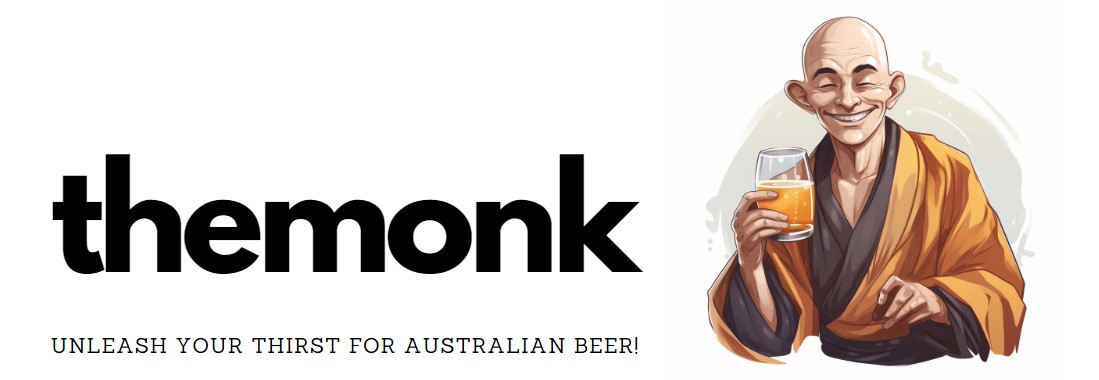
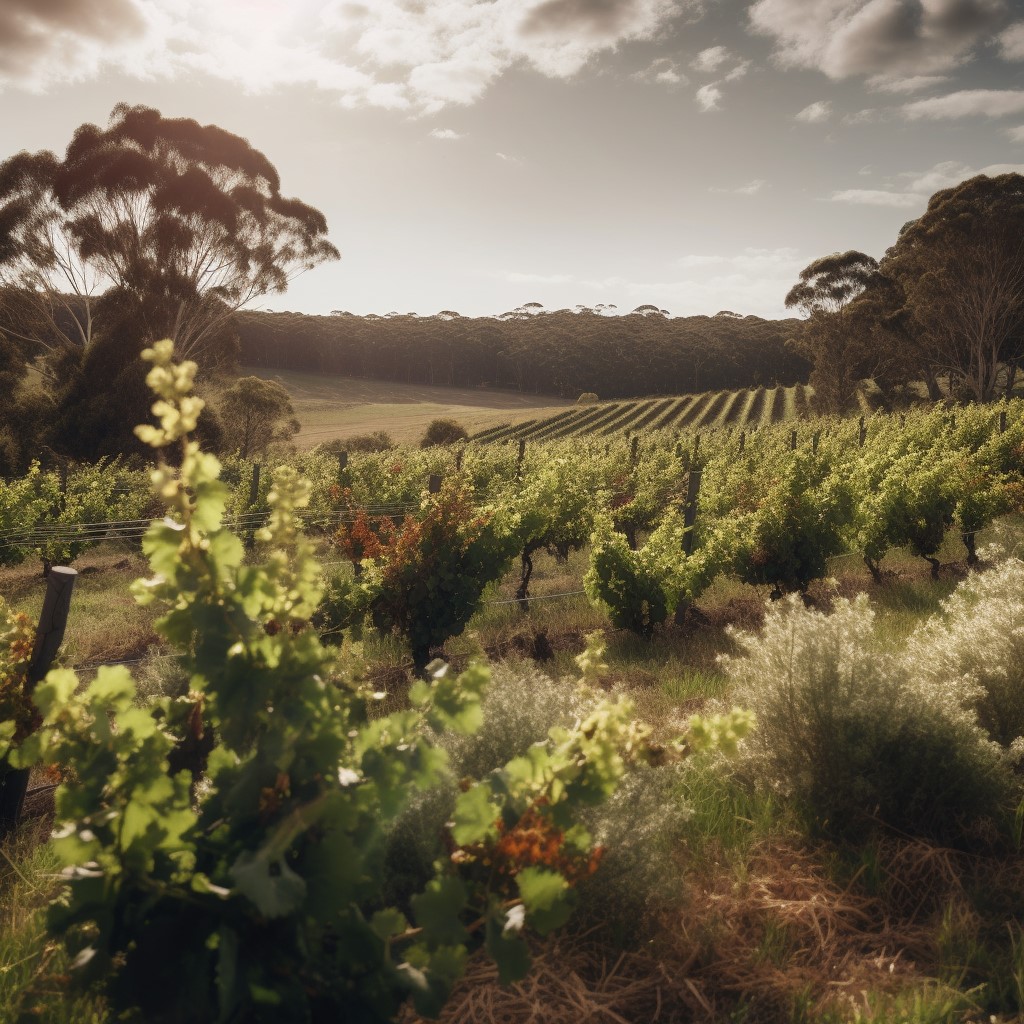
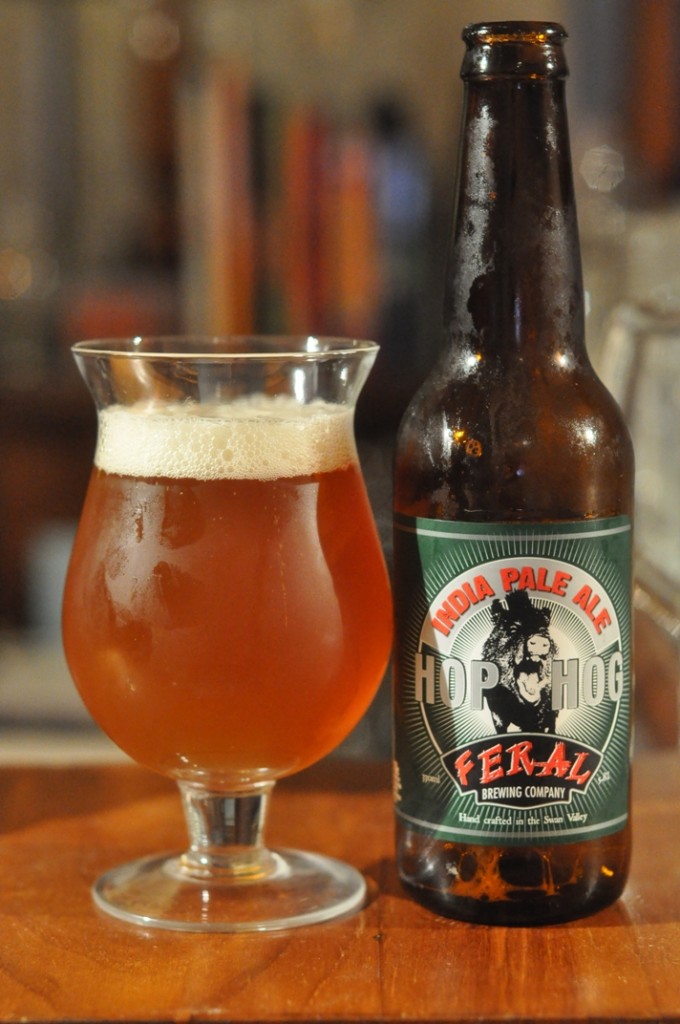
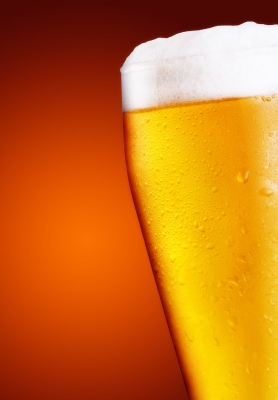
Leave a Reply